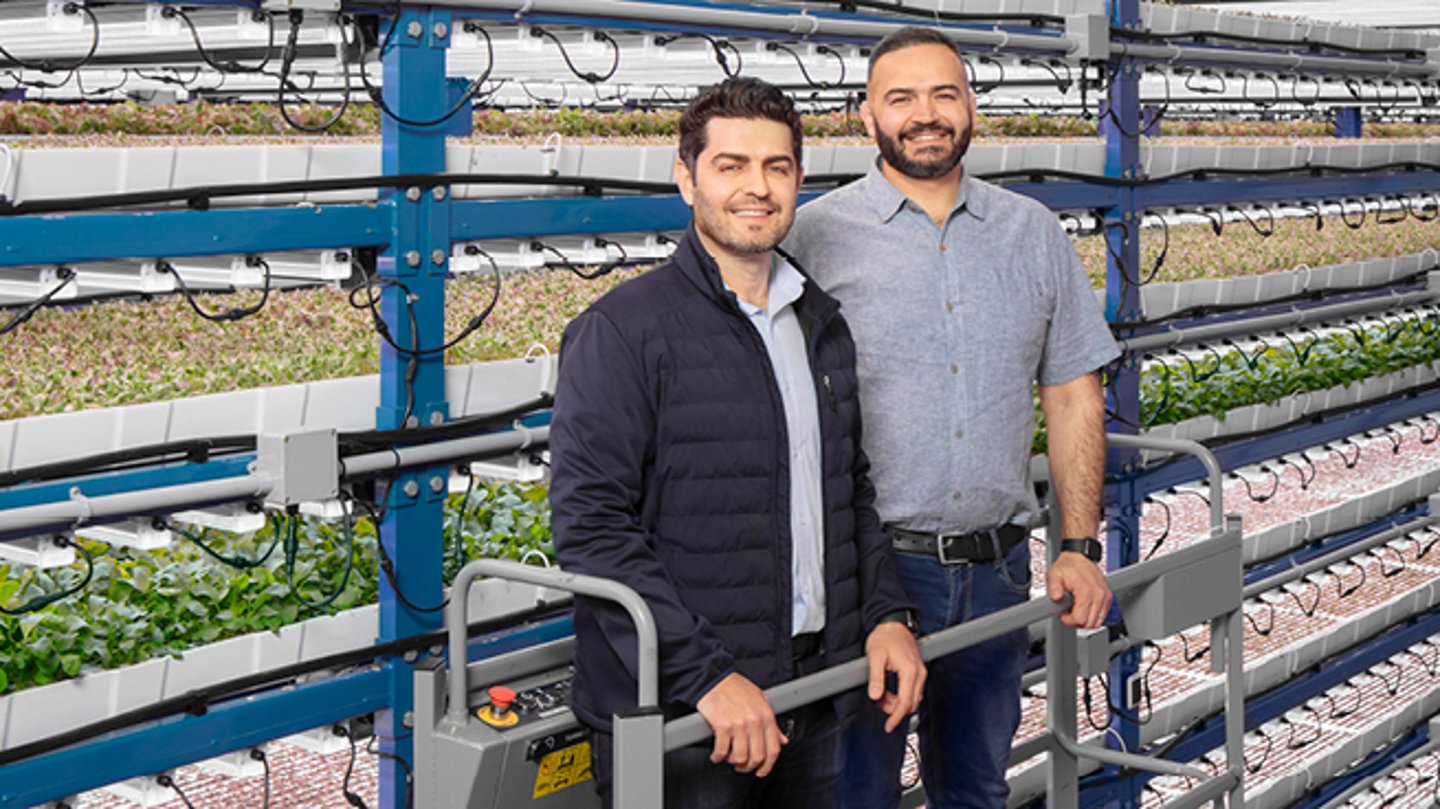How UP Vertical Farms is revolutionizing smart agriculture in Canada
It was 2010 when Bahram Rashti, who was completing his dentistry residency at Vancouver General Hospital and The University of British Columbia, visited satellite clinics in remote northern communities in the province. “In these areas, you pay more for fresh produce, and it’s not as fresh as in the mainland,” says Rashti. That experience got him curious about fresh produce supply and distribution chains, and what effects climate change would have on those processes. He soon discovered that more than 90% of baby leaf greens sold in Canada come from the United States. “I was concerned and curious about food security,” he recalls, thinking: “Supply from the U.S. and other countries would eventually not meet Canadian demand.”
Rashti’s research brought him to a relatively new agricultural concept – indoor vertical farming. “It’s a new ecosystem to grow food indoors reliably, all year round,” he explains. “It can be a greenhouse hybrid, but it’s completely indoors, in a warehouse.”
Indoor vertical farming had already taken off in the United States, Europe and Asia, but Canada was lagging behind. Rashti not only saw a business opportunity to start an indoor vertical farming operation here, but also play a part in creating a more reliable source of produce for Canadians and help with the problem of food insecurity.
READ: Indoor growing could feed Canadians, and others, year round
Rashti discussed the idea of starting such an operation with his brother, Shahram, who was working in IT at the time. “The more we looked at it, the more fascinated we became that indoor vertical farming didn’t exist in Canada,” says Rashti. Over the next five years, they continued working their day jobs – Bahram in dentistry and Shahram in IT, while developing their new farming concept. The brothers did market research, built a prototype in the garage of Bahram’s Vancouver home, and tested different equipment and lighting. They had to ensure the leafy greens could be grown cleanly, consistently and at a high-enough density to be profitable. “We had to manufacture our own lights and develop our own light recipe,” Rashti explains.
The Rashti brothers’ big break came in 2018 when they secured a food distribution partner – The Oppenheimer Group, a B.C.-based multinational fresh produce growing, marketing and distribution company. “Oppenheimer has some of the smartest people in produce,” Rashti says. “They understood the potential of indoor vertical farming. It was exciting when we shook hands with them.”
That partnership validated Bahram and Shahram’s decisions to quit their full-time jobs and go all-in on their vertical farming venture. Thanks to The Oppenheimer Group’s existing industry relationships, the brothers were connected with buyers at major grocers across the country. “We got their input about what they wanted in their leafy greens, like the height of the plants, the structure, taste, quality and varieties,” Rashti explains. With that knowledge, they could fine-tune their research and development to create indoor farming systems and grow exactly the types of greens that grocers would stock on their shelves.
READ: Lettuce prices likely to rise again amid California flooding, experts say
One of the brothers’ big “aha”moments during their research and development was growing leafy green mixes together in one tray. Most baby leaf greens are grown separately and then mixed together after harvesting, which results in bruising of the leaves, shortening their shelf life. Instead, the Rashtis, under their newly-named venture UP Vertical Farms, would grow different varieties such as arugula, and red and green lettuces side-by-side on the same tray, then harvest and bag them directly afterwards. This would extend their produce shelf life from the industry average.
By late March 2023, Bahram and Shahram were ready to harvest their first batch of lettuces in their Pitt Meadows, B.C. facility, to be sold in grocery stores in British Columbia. The day their lettuces first hit supermarket shelves, the Rashti brothers participated in a panel discussion about climate-smart agriculture. “After the event, we drove to a store carrying our greens and half of our products were already gone off the shelves,” Rashti recalls. “It was a good sign.” He bought two packages of the greens to eat with his family. “It was a great moment, eating it with my family at dinner and having the same experience that Canadian consumers were having.”
Last month, UP Vertical Farms expanded beyond its home province of British Columbia to retailers in Alberta, Saskatchewan and Manitoba. “It’s a wonderful feeling to see our products that we worked so hard to build and grow be on supermarket shelves,” Rashti says.
READ: Canadians are buying less food. Now what?
The brothers’ next step will be expanding East. They’re currently raising equity to build a growing facility in Ontario and are also looking to expand into the United States. Looking back at his journey and career transition, from dentisty to agriculture, Rashti is humbled.
“It’s a proud moment when you change careers and can have a larger impact on society,” he says. “It’s rewarding – it’s a good feeling.”
This article first appeared in Canadian Grocer’s May 2023 issue.



